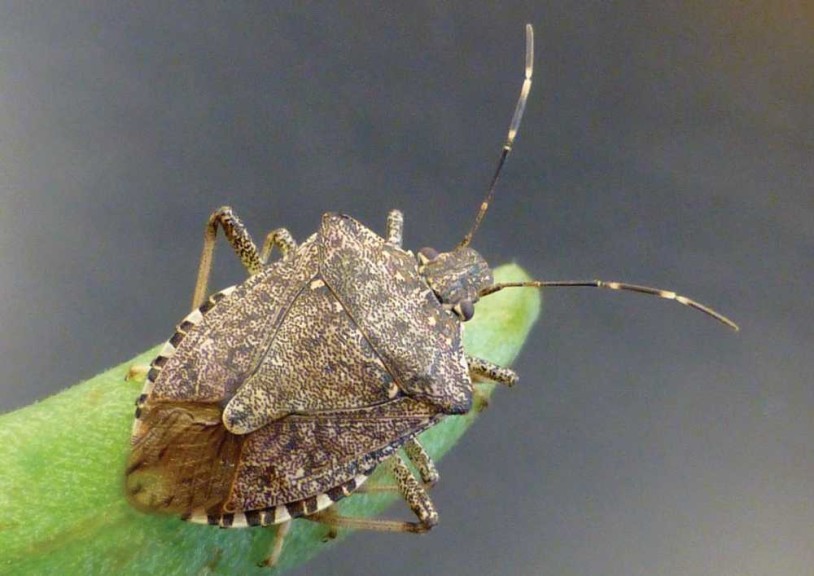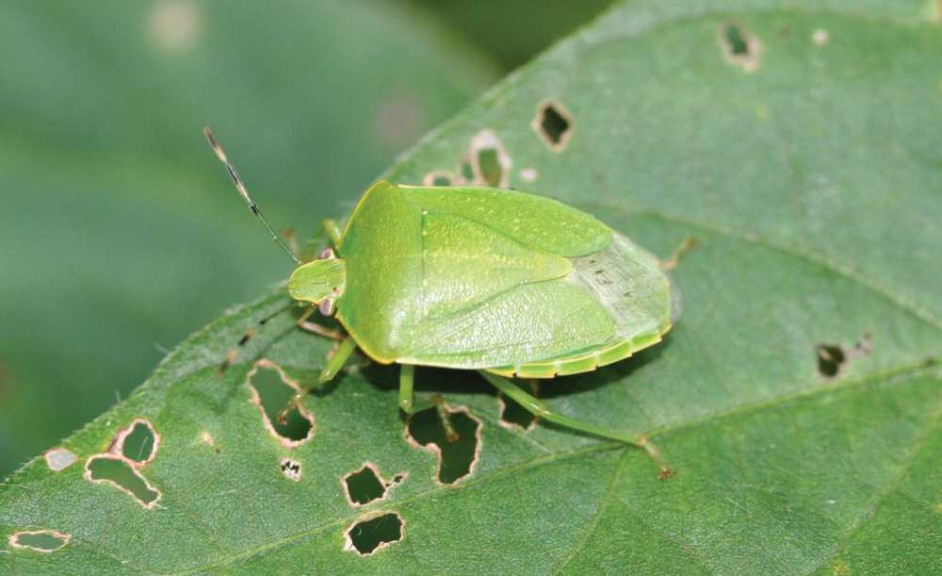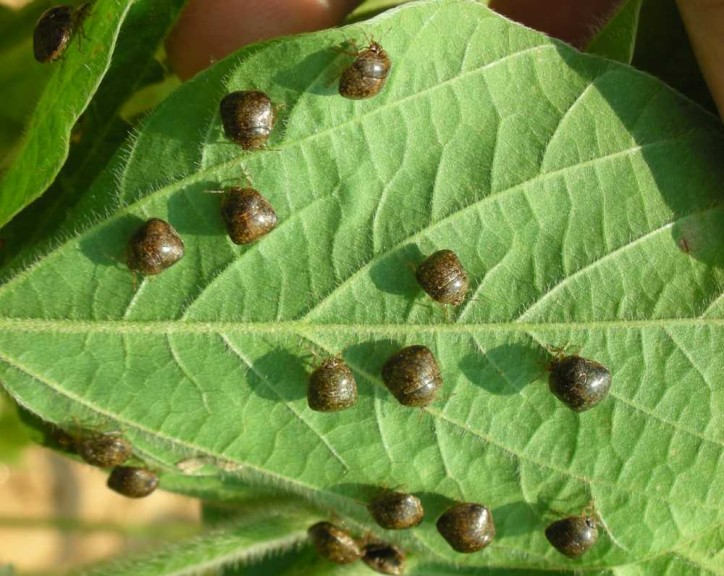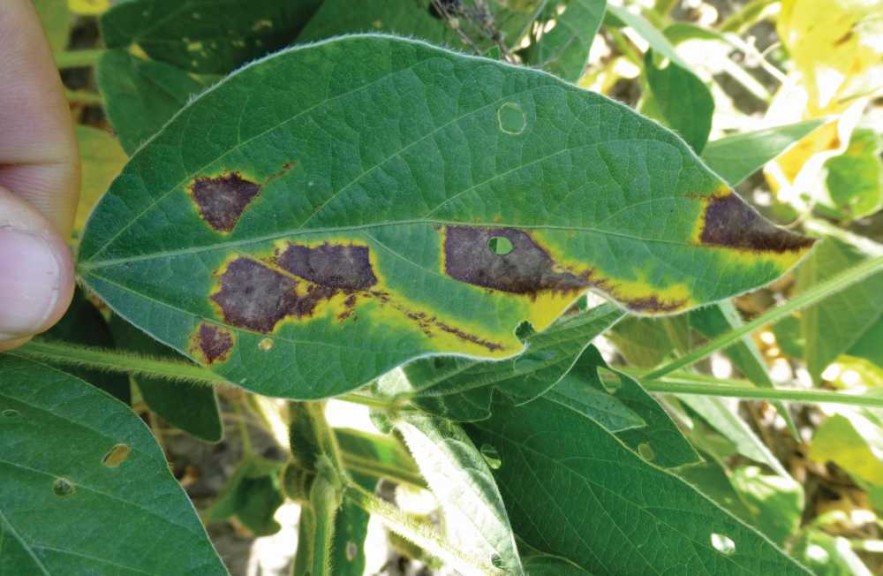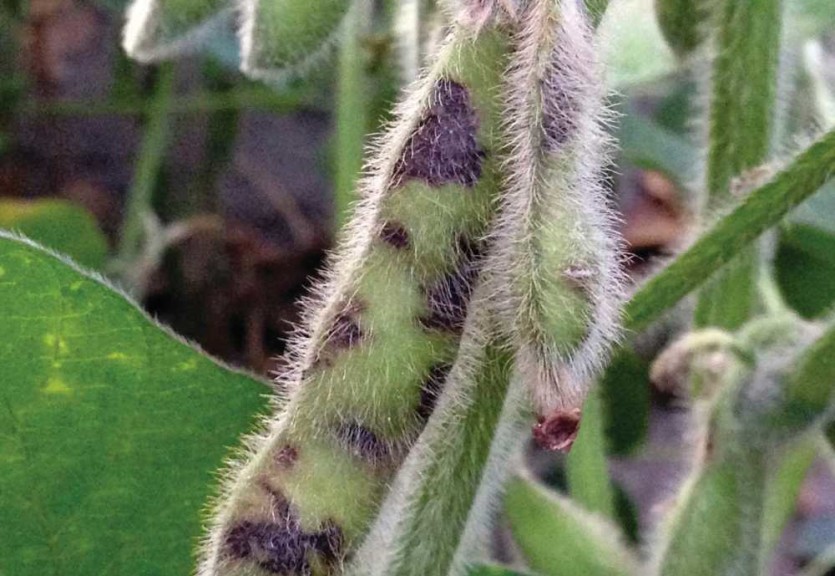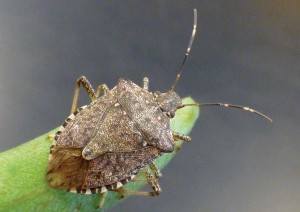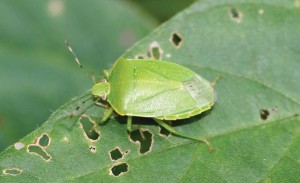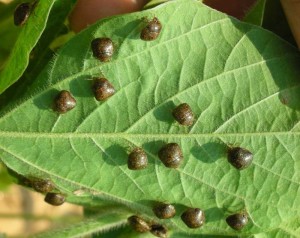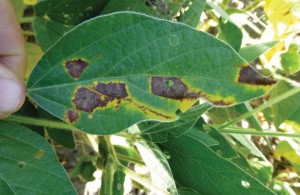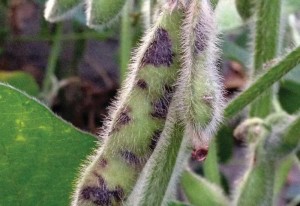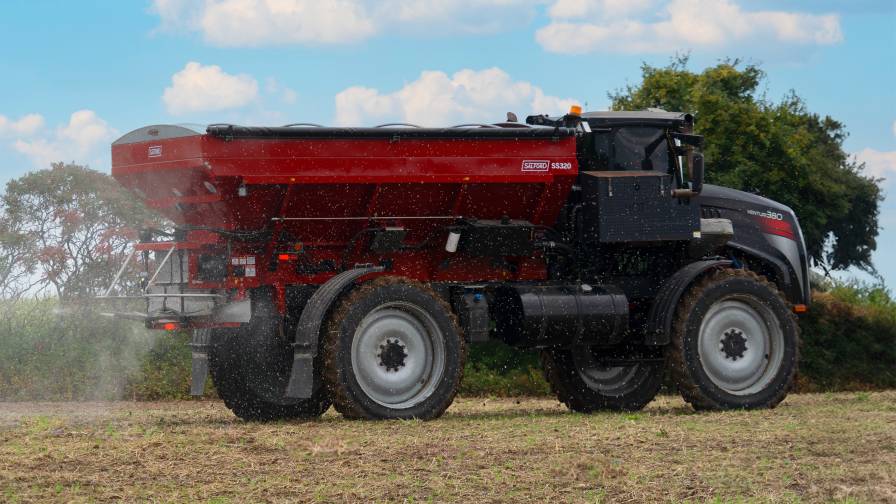New Players May Make Pest Headlines In Corn, Soybean
One word that’s been offered to describe last season’s insect pressure is “mellow.” That from Christian Krupke, Extension entomologist with Purdue University, who adds: “It was as good a season as we’ve seen in a quite some time.” The same could be said for disease problems in the Midwest, particularly later-season infestations.
But the season ahead is uncertain, and extension specialists are raising a few red flags for growers and dealers.
Insect resistance to Bt traits in corn is suspected in a number of states, including New York, Michigan, Illinois and several states west of Illinois. While Indiana hasn’t experienced the problem yet, Krupke expects to get reports of it this year, as performance issues in Bt hybrids have been confirmed in counties right on Indiana’s doorstep. He encourages dealers and producers to be vigilant especially in late June and early July, watching for possible Bt control breakdowns — usually identified by lodged corn due to heavy root feeding.
He lists the three primary risk factors for resistance development: continuous corn planting, using the same trait over and over again and a history of high rootworm pressure in a grower’s field. “If you were ever inclined to rotate, either to soybeans or other trait technologies, this would be the time to do it,” he says. For instance, if growers have used YieldGard year after year, they should rotate to a non-traited corn — protected with granular liquid insecticides.
Jeff Bradshaw, Extension entomologist with the University of Nebraska-Lincoln, has noticed that many farmers no longer equip their planters with granular insecticide applicators – an indication of how heavily they’ve come to rely on the Bt traits.
Unfortunately, in some areas of east-central and northeastern Illinois, the most severe western corn rootworm larval injury took place in rotated corn fields (first-year corn), despite the use of some single-traited Bt hybrids (specifically featuring the Cry3Bb1 protein), reports Michael Gray, professor and assistant dean at the University of Illinois. Corn and soybean fields were infested with very dense populations of western corn rootworm adults. Corn plants had significant root pruning and plants were severely lodged.
Work continues with an assortment of Bt toxins for lepidopteran pests. For example, a new Bt protein that’s recently been added to the trait mix is Vip3A, marketed as Viptera in Syngenta’s product line. “The Vip protein is very active against most caterpillars, and it doesn’t seem to be resistant in any way with the other Cry proteins,” says Galen Dively, IPM consultant and professor emeritus at the University of Maryland.
Another pest to watch in 2014 will be spider mites, especially considering a warmer, drier summer is being predicted. The mites were the biggest challenge Nebraska corn growers faced in 2013.
Bradshaw says there’s been a lot of industry interest in newer chemical controls for spider mites, and growers have been particularly paying attention to how Zeal has performed. “But as corn values adjust downward, there may be less use of more expensive products,” he says. “This could lead to greater use of older compounds (such as chlorpyrifos) — some of which are not effective in some areas due to spider mite resistance.”
Stinky Up-And-Comers
The brown marmorated stinkbug hadn’t hit the pages of the farm press until just a few years ago, but the pest is now considered an economic threat in six states, including Delaware, Maryland, New Jersey, West Virginia, Virginia and Pennsylvania. An invasive species from Asia, it was first detected and identified outside Allentown, PA, in soybean fields around 2001, explains Maryland’s Dively. Now the insect has been detected in 41 states and is a potential threat on a wide variety of crops.
The bug is an efficient hitchhiker, he says, but it does need trees and wood to complete its life cycle. It overwinters in wood lots and produces a generation there before moving to other plants in mid-July. The insects also can be a real problem in homes, as they seek wood (and warmth in colder temperatures) to overwinter.
“In areas like Iowa where you’ve got field after field, wide open, I don’t think brown marmorated stinkbugs are going to be a problem,” says Dively. He adds that pyrethroids work quite well against them.
Soybeans — and now corn — in Ohio are facing threats from a stinkbug complex that includes green stinkbugs, red shouldered stinkbugs and in some fields, brown marmorated stinkbugs. As these insects begin to increase in numbers across the state, soybean growers should be concerned about the potential for yield declines. The bugs damage a crop by using their piercing-sucking mouthparts to feed on the plant seeds. States in the South are also dealing with multiple stinkbugs, including the red banded and southern green species.
In fact, a newly discovered stinkbug cousin is making an impact in the South as well. The kudzu bug, an invasive species identified in the U.S. in 2010, has become a “major concern” for soybean growers in the region, reports Jeremy Greene, Extension entomologist with Clemson University.
The pest comes out of its overwintering sites and heads straight to early planted soybeans, kudzu or volunteer soybeans (which come up before kudzu greens up). Extension experts have developed threshold guidelines and recommend sweep net sampling in soybeans. The pest can take 60% of yields if not controlled, says Greene, though so far insecticides have been effective against it.
He believes the kudzu bug will continue to move into new areas of the country. “I would suspect it’s going to make an orderly push northward, along the Mississippi River, particularly if we start having mild winters the next couple of seasons. There are a lot of soybeans along that corridor.”
In general, Greene notes that lots of rainfall in the spring produces an abundance of natural wild hosts for many problem insects. “That allows them to build their numbers before we really get the crops in place. They ‘stairstep’ through our wild hosts into the cropping season,” he says.
Disease Snapshot
Like insects, diseases went a little easier on Midwest crops in 2013, thanks in great part to drier summer months. Many regions did experience some seedling blights early on because of a wet spring, but little else developed as the season progressed.
In Iowa, those early seedling blights reduced stands and in some cases, fields needed to be replanted. “In corn, we had a little bit of root and seedling blights, Physoderma stalk rot and Fusarium stalk rot, but beyond that, I would say it was a fairly light year,” says Daren Mueller, assistant professor of plant pathology at Iowa State University. “A large percentage of growers just kept the fungicides in the shed this year because they planted late or by the time they got to August to spray, it was so dry.”
Soybeans did experience some stem canker and charcoal rot late in the season, but not enough to seriously impact yields.
Mueller was surprised at the dramatic increase in soybean viruses last season, including the relatively new soybean vein necrosis (SVN) and tobacco streak virus. He says the problem appeared worst in central Iowa, around Ames, where 30% to 40% of some fields were affected. In Illinois, SVN was fairly prevalent as well.
In corn, Carl Bradley, extension specialist with the University of Illinois, saw red root rot in some fields. He says the disease will require a closer look this season to determine how big of a threat it is. Mueller has a word of caution for 2014: Back in 2012, ISU’s nematologist found the highest levels of soybean cyst nematode (SCN) he’d ever seen. If growers are planting soybeans in those fields again this year, high SCN populations might be a problem. He recommends planting resistant varieties or using seed treatments, though the cost of some products is “an investment.”
Mueller also warns growers about planting into fields with a history of sudden death syndrome (SDS). Like SCN, he recommends farmers select resistant varieties for those fields.
For seedling diseases and emergence problems, Bradley says fungicide seed treatments continue to be helpful. “Many of the new seed treatment products contain new active ingredients that add efficacy to control a broader spectrum of seedling pathogens,” he says. Additional foliar products are also coming out, with more than one active ingredient from different chemistry classes. They are working better in situations where strobilurin fungicide resistance has occurred, such as with frogeye leaf spot in soybeans.
Mueller is also looking forward to seeing how new products perform. Syngenta’s Clariva nematicide/ insecticide/fungicide, introduced last year, includes spores of Pasteuria nishizawae to fight SCN. And Bayer CropScience just submitted an EPA registration application for ILeVO, the first seed treatment reported to control SDS.
Any Weather Help?
Most of the U.S. experienced a colder winter than normal, some regions shockingly so. Will the temperatures impact the Class of 2014 pests? Yes and no. Unfortunately, most of the “heavy-hitters” in terms of insects will remain pretty much untouched, says Krupke.
In Indiana, snowcover that continued from late December onward insulated the ground to some extent, so cold penetration wasn’t what it could have been — to knock out overwintering rootworm eggs, for instance. Insects that winter aboveground, even beneath plant debris, such as bean leaf, however, could see lower populations. In Illinois, Gray anticipates lower levels of Japanese beetles in 2014 due to the deep soil freeze this winter. This species spends the winter as grubs within the soil, and they could have been negatively affected.
With corn earworm, Dively says that if a frostline gets below two inches for a period of time, the cold will kill (though earworms could still migrate up from the South). There have been reports of frostlines as deep as 24 inches in Iowa and six to eight feet in Wisconsin.
Dively believes stinkbugs should survive fine this winter, holed up in dwellings and dead trees under bark. They have the unique ability to reduce their own freezing point by changing the lipid content in their blood — with the result is almost acting like antifreeze.
As for diseases, the winter’s cold will have little adverse effect. “Once the spores get down into dormancy, they’re fine, says Iowa’s Mueller. In fact, with the ground frozen so deep, farmers will see cooler soil temperatures further into the spring — so there could be more seedling diseases and issues at planting, he suggests.
Bradley does wonder if cold temperatures in southern states may have killed off or slowed growth of the alternative hosts of rust pathogens — which may reduce chances in the Midwest of being impacted by the major rust diseases, such as soybean rust.
